Last weekend in April I was fortunate to find myself helping at the Royal Engineer’s Museum with their “Build Demolish & Defuse” event.
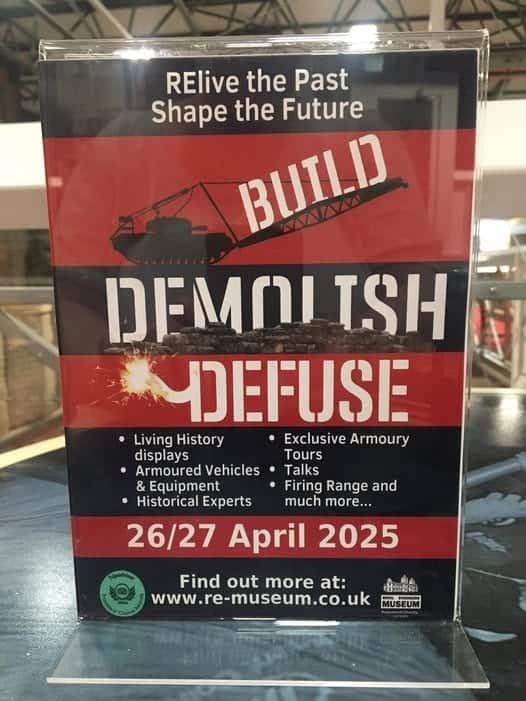
Once again I was there with the German Mines display. The difference this year is that we had some extra display items for the public to look at and handle. These helped to show the changes in the Tellermines (the 35 model through to the 42 model) (anti-vehicle mines) and also the changes in the S-Mine (anti personnel mines).
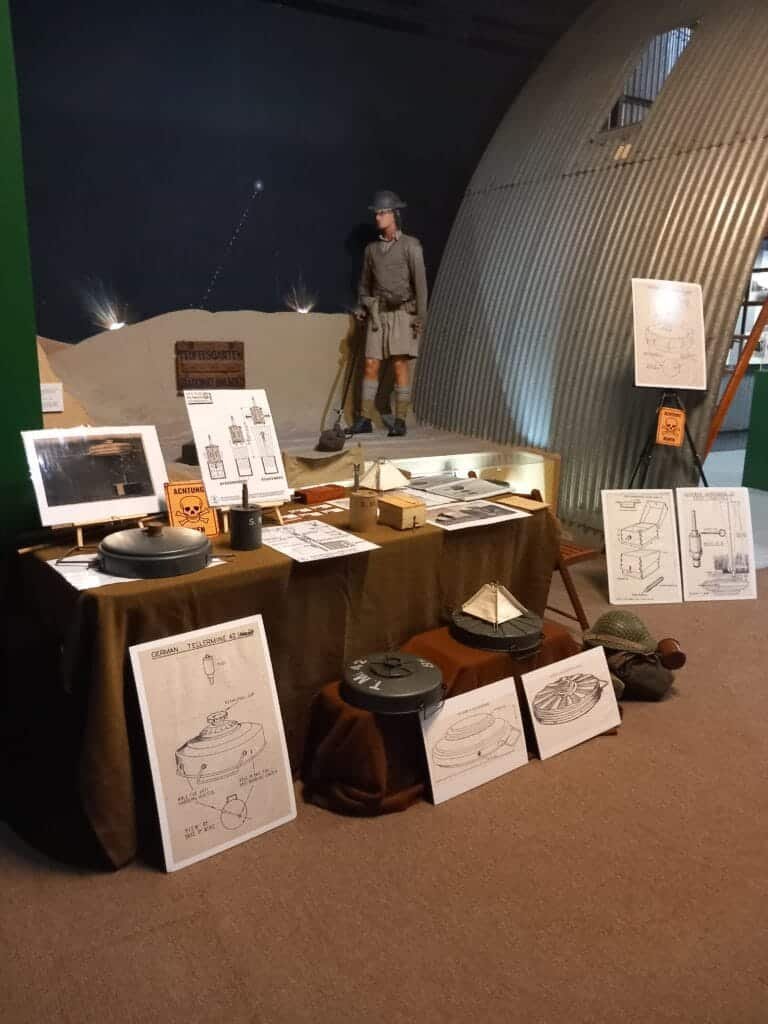
The other thing that I used on the display was a set of loaded 37 pattern Webbing and helmet, just to help give and indication of how much extra weight a soldier might be carrying and how with all of the kit they start to come close to the weight required to trigger one of the anti vehicle mines.
It was a busy weekend with a lot of engagement with visitors, a few of which I recognised from last year but there were plenty of first time visitors to the Museum as well.
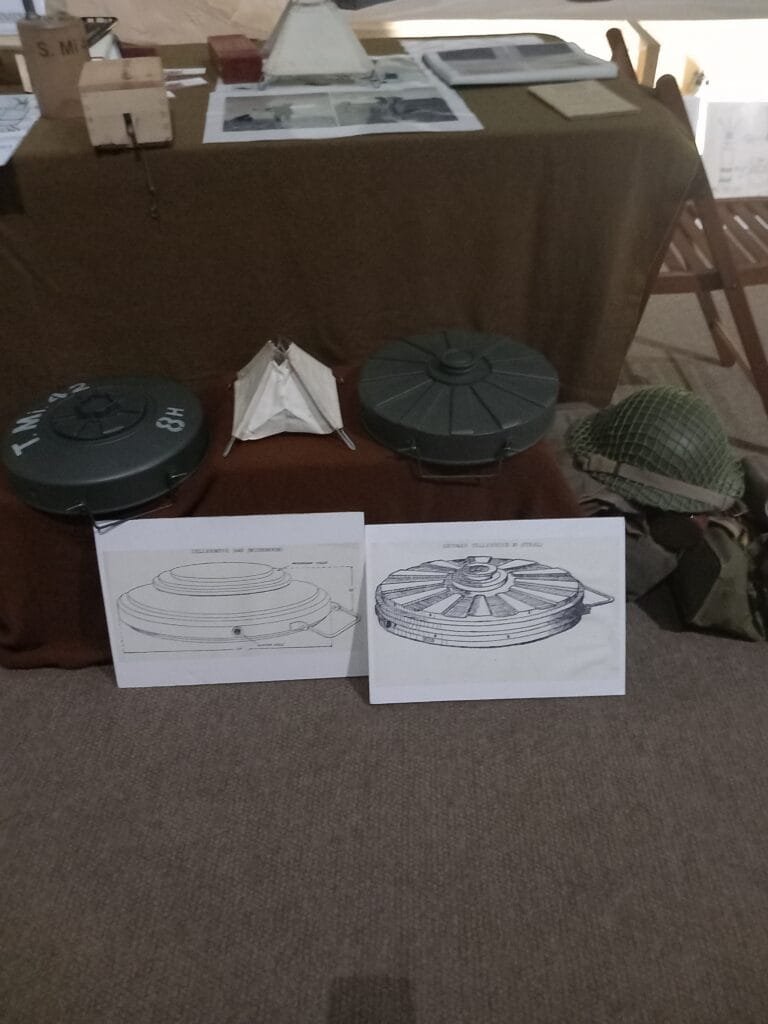
It was great to chat with the visitors, some were keen to understand about the mines and one of the key things that helped to start the talks was explaining the differences between Mine clearance and bomb disposal.
For those that don’t know, Bomb disposal was a specialist task undertaken by dedicated bomb disposal units but mine laying and clearance could be carried out by any Sapper unit.
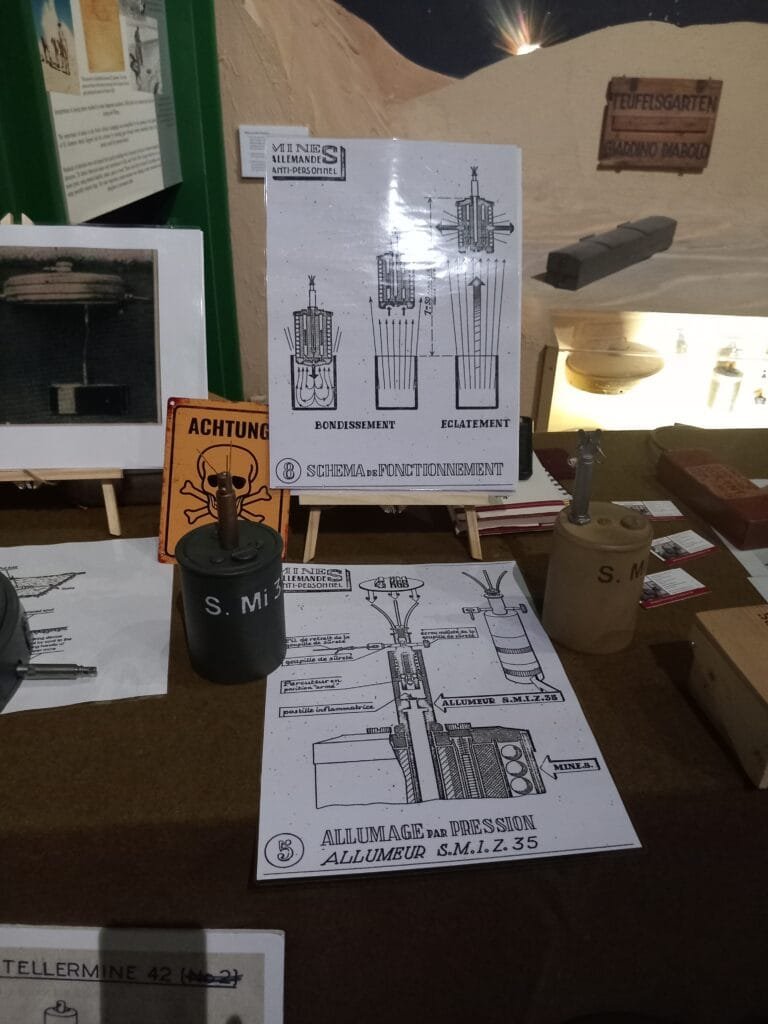
It was also great to meet up with Rob Crane from COPP Survey (www.coppsurvey.uk), who deals with the history of Combined Operations Pilotage Parties of WW2, I had previously met Rob at last years We Have Ways Fest where we had spoken about one of his family members that had been an instructor at 1 Training Battalion Royal Engineers that was located at Clitheroe. Rob shared some photos with me of the Mine Warfare training that was carried out at the time.
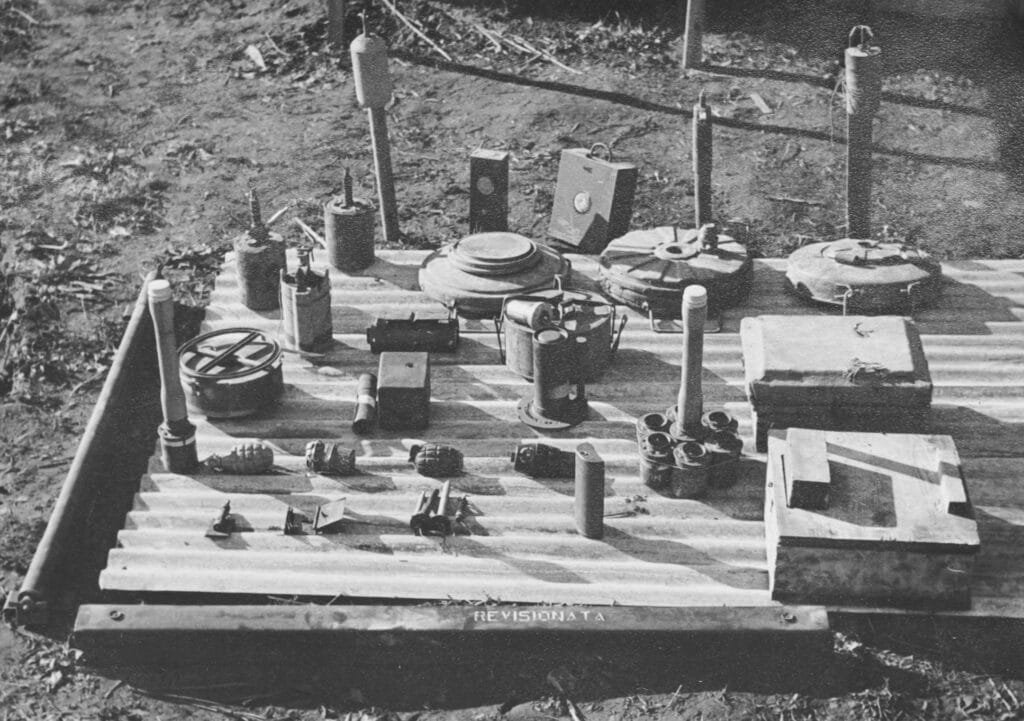
The above photo provided by Rob is a cracking display of mines and explosives that could be encountered by a WW2 Sapper and it is good to know that my display is in the same vein as this, so it’s good to know that I’m not far off the mark.
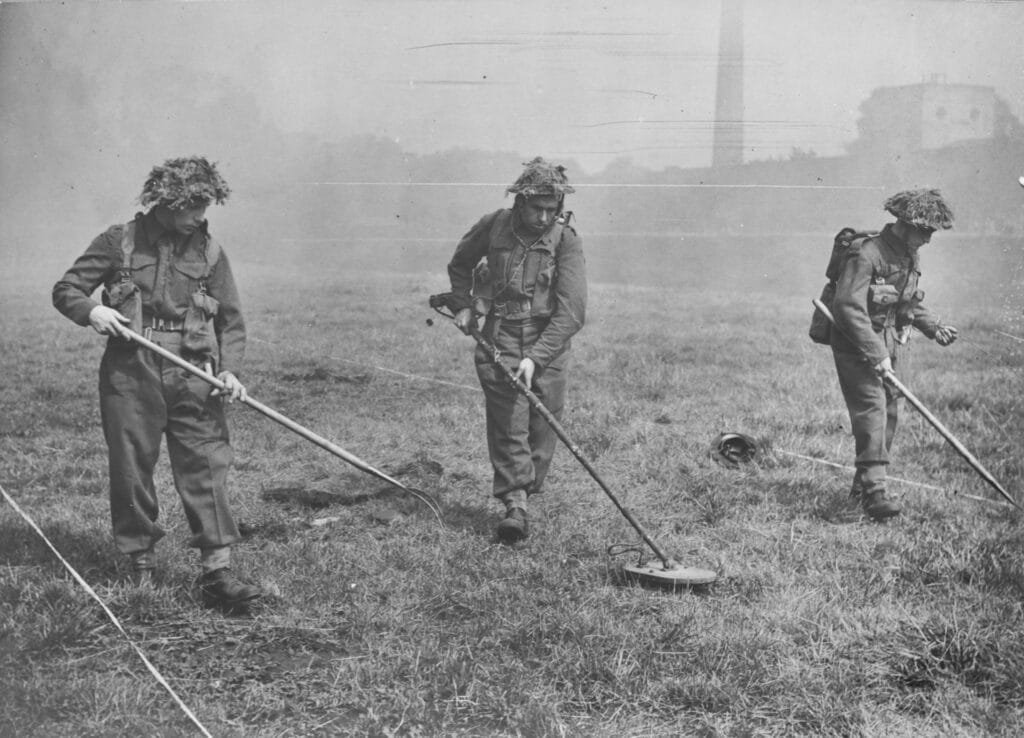
The photos provided by Rob have also helped to give me some ideas on how to further develop and evolved the display and the talks.
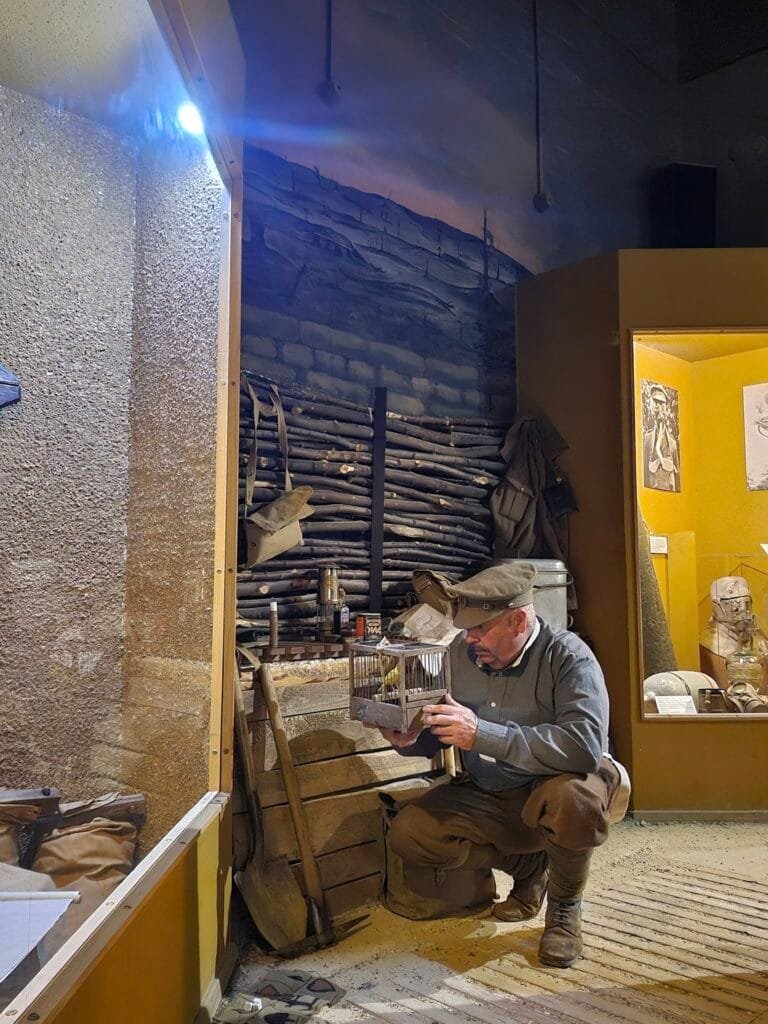
One of the other Living historians that was in attendance was Sapper Shand, who deals with the work and activities of the RE Tunnelling Companies in the Great War. We had a good chat discussing the variations and modification of tools required by the tunnellers and also the way that tools were modified by the RE Mounted Troops for to be carried in the RE Tool Bucket on the saddle of a horse.
Sapper Shand runs his own facebook group – RE Clay Kickers so if you are interested in the Great War Sappers or in particular in the role of Tunnellers then give him a follow and like.
https://www.facebook.com/profile.php?id=61558148302748
One of the other visitors was an individual taking a lot of photos, once we got chatting it was interesting to hear how he, Bob, would visit events to get photos from WW2 events and re-enactors. Being happy to oblige we took a number of photos for Bob’s facebook group, one of which is below.

The following is a link to Bob’s group https://www.facebook.com/BobsFighting40s
It was a cracking weekend with a lot of interaction with the public and it was good to know that the changes to the display worked and worked well. Now looking forward to a future visit back to the RE museum.
